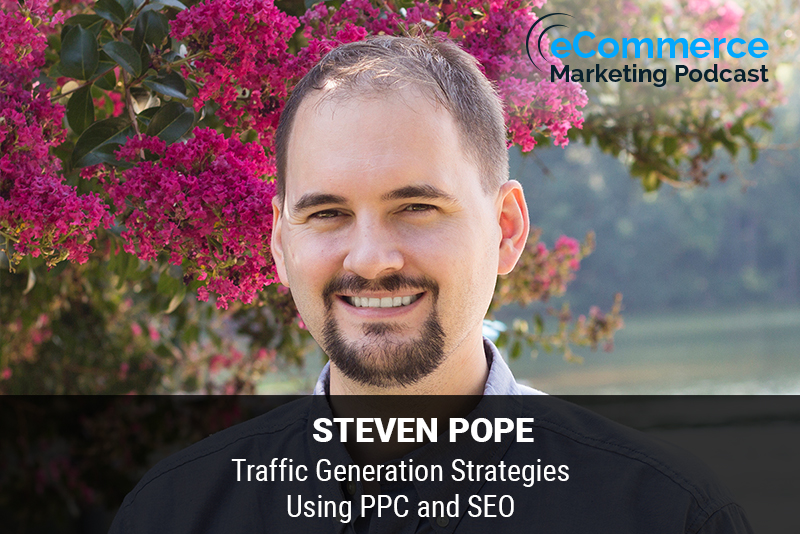
The eCommerce Marketing Podcast walks you through everything that goes into ecommerce marketing — from inbound marketing to paid advertising to conversions. Learn the strategies top marketing experts use to grow their businesses.
Marketing Strategies Revealed in this Episode:
- Basic traffic generation strategies that any ecommerce business can start doing today
- Should a new ecommerce business initially focus on PPC or long term SEO and how should they go about doing this?
- Tools and resources that all ecommerce businesses should have in place to maintain successful PPC and SEO campaigns and strategies
- Successful ecommerce brands that have done a great job balancing PPC and SEO and how have they accomplished this

Episode Title: Driving Traffic and Sales on Amazon – with Steven Pope
Host: Arlen Robinson
Guest: Steven Pope, Founder of My Amazon Guy
Episode Overview: In this episode, Arlen Robinson interviews Steven Pope, founder of My Amazon Guy. Steven shares his extensive background in eCommerce and Amazon sales, offering valuable insights into pay-per-click advertising, SEO strategies, and best practices for driving traffic and sales on Amazon. He also discusses the importance of diversification and provides actionable tips for both new and established eCommerce businesses.
Key Takeaways:
- Introduction to Steven Pope (00:25)
- Steven Pope’s background in TV reporting, transitioning to eCommerce, and founding My Amazon Guy.
- Discussion about passive income in eCommerce.
- Strategies for Driving Traffic and Sales (08:10)
- Importance of diversification across multiple platforms.
- Launching as many products as possible to increase visibility and sales.
- Advertising and SEO (15:30)
- The benefits of video ads on Amazon and how to create effective ones.
- Differences between SEO on a website and Amazon SEO.
- Amazon SEO Techniques (22:45)
- Three-phase SEO strategy for Amazon:
- Phase 1: Best practices (no commas, no duplicate words, include misspellings and a little Spanish).
- Phase 2: Pink word update to refine keywords.
- Phase 3: Strike zone update using Helium 10 to target keywords ranked 20-50.
- Three-phase SEO strategy for Amazon:
- Tools and Automation (32:00)
- Recommended tools: Helium 10, Jungle Scout, SEM Rush.
- The importance of human oversight in managing PPC campaigns over fully automated tools.
- Spanish Keywords for Amazon SEO (38:20)
- Adding Spanish keywords to tap into the second most spoken language in the U.S.
- Future of Amazon and eCommerce (41:10)
- Predictions for Q4 growth and the importance of stocking inventory early to avoid shortages.
Guest Information: Steven Pope is the founder of My Amazon Guy, a full-service Amazon agency that helps brands grow their sales through SEO, advertising, and comprehensive eCommerce strategies. He also runs My Refund Guy and Momstir, showcasing his diverse expertise in the Amazon marketplace.
Contact Steven Pope:
- Website: My Amazon Guy
- Email: [email protected]











